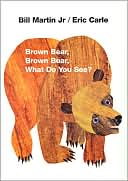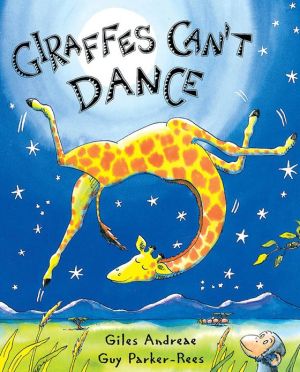A Penguin Story
Edna the penguin only knows the three colors that surround her: white ice, black night, and blue sea. She is convinced there is something more out there. So she sets out on a quest—a quest for color. When she finally finds what she's been looking for, it's everything she hoped for and more. But that doesn't mean she will ever stop looking.
Search in google:
Edna the penguin only knows the three colors that surround her: white ice, black night, and blue sea. She is convinced there is something more out there. So she sets out on a quest—a quest for color. When she finally finds what she's been looking for, it's everything she hoped for and more. But that doesn't mean she will ever stop looking.The Barnes & Noble ReviewAntoinette Portis's first picture book, Not a Box, was a stunning exploration of the imaginative world of early childhood. With a deft hand for sophisticated simplicity, Portis does it again with a graphic examination of the way color is central to our lives. The main character is Edna, a penguin. Edna, a torpedo-shaped form, bisected in black and white, placidly observes the colors that surround her. " 'White,' thinks Edna." As we join her gazing across an expanse of snow that reaches to the horizon a narrow band just inches from the top of the page. Short brushstrokes of white are tapped across the surface, indicating falling snow. The snowflakes subtly change shades, white on the gray sky transforming to a light gray and drifting to join the snow on the ground. Edna yearns for more colors as she observes the black of the night, then the blue of the sea and sky. She ventures forth on her quest for a hue that is not white, not black, and not blue. After a long expedition, she literally falls into a hill of safety orange. Edna embraces the glaring color and runs home as fast as she can to share her discovery. The community of penguins, following her lead, immediately begin the arduous journey over the frozen landscape. They finally arrive at the vivid arc of color that is the orange-clad Antarctic scientists' tent. Portis combines clean line with a limited palette, a very few words, and a deadpan sense of humor to create a surprisingly affecting tale of the quest for a world beyond our everyday experience. --Lisa Von Drasek
\ Paul O. ZelinskyThe story, a quest to bring color into a lacking world, isn't new to children's literature, but that's all right; children who take to this book won't know the precedents…the artwork…[is] bold, simple, cleanly designed.\ —The New York Times\ \ \ \ \ Publishers WeeklyEdna the penguin yearns for something more stimulating than a minimalist horizon. The endless white of snow and ice, the black of the night sky and the "Blue, blue, blue. Forever" of the sky and ocean only increase her ennui. Readers know alternatives exist because a sunset-orange seaplane goes by when Edna's back is turned; brilliant green and orange endpapers, too, contrast with the limited palette and blocky compositions. Edna treks over icebergs to a revelatory destination, then brings her brood to meet a friendly human expedition camping in ambulance-orange domes and wearing matching jumpsuits; she proudly waddles home with a souvenir orange rubber glove. Portis (Not a Box) celebrates those who long for art and, with her own playful rendering, she inspires readers to celebrate, too. Ages 4-8. (Jan.)\ Copyright © Reed Business Information, a division of Reed Elsevier Inc. All rights reserved.\ \ \ Children's Literature\ - Mary Hynes-Berry\ Portis's award-winning Not a Box and Not a Stick both used sparse text and spare line drawings to celebrate children's imagination and the power of play. Her latest book clearly has some of the same objectives. However, the story line, the text and even the illustrations are more complex. In this case, Edna the penguin sets out to find a bit of color that goes beyond white ice, black night, and blue sea. For a while, it seems as if the world is all white, black, and blue. But then, just as the midnight sun begins to rise, Edna and the friends who have joined her discover an arctic expedition team whose garments, tent and plane are all brilliant orange. The humans don't stay long, but one leaves behind an orange glove. Edna takes home with her to transform her white/black/blue world. This simple token confirms Edna's belief that even more colorful adventures are possible in the future. While this book has real charm, it doesn't quite have the simple brilliance of Portis's earlier works. Even so, it deserves a place in home, preschool and early elementary libraries. Reviewer: Mary Hynes-Berry\ \ \ \ \ School Library JournalPreS-Gr 2\ Like the imaginative heroes of Portis's Not a Box (2007) and Not a Stick (2008, both HarperCollins), Edna yearns for something different. Though her fellow penguins are content to play and eat in their world of white snow, black night, and blue sea, she seeks something else. She finds it-a giant, bright orange research station, inhabited by orange-coated researchers. When she takes the other penguins there, they are suitably impressed, and one of the researchers even gives her a colorful glove. As the others go back to their normal lives, Edna stands atop an iceberg, wearing the orange glove like a hat, wondering "What else could there be?" This gentle tribute to dreamers crackles with quiet humor, and the art's limited palette both parallels the plot and lends the book a classic feel. Portis's ability to convey emotion and character through the slightest change in Edna's beady eyes and flippers is extraordinary, and the interplay of the text and pictures nears perfection. A delightful story, delightfully told.-Kathleen Kelly MacMillan, Carroll County Public Library, MD\ \ \ \ \ \ Kirkus ReviewsIcy Antarctica is frustratingly monochromatic for Edna the penguin, so she forsakes playing (and occasionally even lunch) to scan the horizon for something else. What does she see as she gazes out at the relentless ice and snow? "White, thinks Edna. Like yesterday." At night it's, "Black. Like tomorrow" and the ocean is just, "Blue, blue, blue. Forever." Life's tricolor monotony lifts when she accidentally crashes into a safety-orange "something else"-a large tent set up in a scientists' camp. "WOW!" she cries, and, endearingly, proceeds to hug what she can of it. Snow falls on spare, artfully composed landscapes in rough dabs of paint, and the adorable penguins in thickly textured lines resemble earplugs with feet. Young readers may gleefully gloat when they spot things Edna doesn't see at first-a bright orange plane flies by when her back is turned, and a green ship slips undetected into a double-page spread. The deliberately clashing endpapers, solid orange and green, extend the theme in this sweet story of yearning. (Picture book. 4-8)\ \ \ \ \ The Barnes & Noble ReviewAntoinette Portis's first picture book, Not a Box, was a stunning exploration of the imaginative world of early childhood. With a deft hand for sophisticated simplicity, Portis does it again with a graphic examination of the way color is central to our lives. The main character is Edna, a penguin. Edna, a torpedo-shaped form, bisected in black and white, placidly observes the colors that surround her. " 'White,' thinks Edna." As we join her gazing across an expanse of snow that reaches to the horizon a narrow band just inches from the top of the page. Short brushstrokes of white are tapped across the surface, indicating falling snow. The snowflakes subtly change shades, white on the gray sky transforming to a light gray and drifting to join the snow on the ground. Edna yearns for more colors as she observes the black of the night, then the blue of the sea and sky. She ventures forth on her quest for a hue that is not white, not black, and not blue. After a long expedition, she literally falls into a hill of safety orange. Edna embraces the glaring color and runs home as fast as she can to share her discovery. The community of penguins, following her lead, immediately begin the arduous journey over the frozen landscape. They finally arrive at the vivid arc of color that is the orange-clad Antarctic scientists' tent. Portis combines clean line with a limited palette, a very few words, and a deadpan sense of humor to create a surprisingly affecting tale of the quest for a world beyond our everyday experience. --Lisa Von Drasek\ \



![Tickle Monster Laughter Kit [With Tickle Mitts] Tickle Monster Laughter Kit [With Tickle Mitts]](/application/data/covers/98/35/9781932319835.jpg)




